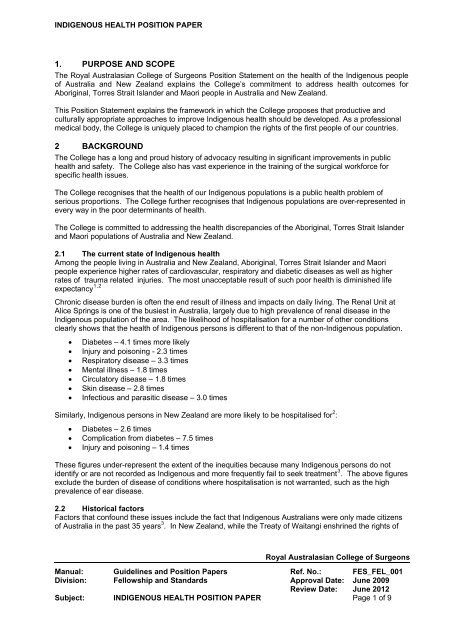View - LIME Network
View - LIME Network
View - LIME Network
You also want an ePaper? Increase the reach of your titles
YUMPU automatically turns print PDFs into web optimized ePapers that Google loves.
INDIGENOUS HEALTH POSITION PAPER1. PURPOSE AND SCOPEThe Royal Australasian College of Surgeons Position Statement on the health of the Indigenous peopleof Australia and New Zealand explains the College’s commitment to address health outcomes forAboriginal, Torres Strait Islander and Maori people in Australia and New Zealand.This Position Statement explains the framework in which the College proposes that productive andculturally appropriate approaches to improve Indigenous health should be developed. As a professionalmedical body, the College is uniquely placed to champion the rights of the first people of our countries.2 BACKGROUNDThe College has a long and proud history of advocacy resulting in significant improvements in publichealth and safety. The College also has vast experience in the training of the surgical workforce forspecific health issues.The College recognises that the health of our Indigenous populations is a public health problem ofserious proportions. The College further recognises that Indigenous populations are over-represented inevery way in the poor determinants of health.The College is committed to addressing the health discrepancies of the Aboriginal, Torres Strait Islanderand Maori populations of Australia and New Zealand.2.1 The current state of Indigenous healthAmong the people living in Australia and New Zealand, Aboriginal, Torres Strait Islander and Maoripeople experience higher rates of cardiovascular, respiratory and diabetic diseases as well as higherrates of trauma related injuries. The most unacceptable result of such poor health is diminished lifeexpectancy 1,2Chronic disease burden is often the end result of illness and impacts on daily living. The Renal Unit atAlice Springs is one of the busiest in Australia, largely due to high prevalence of renal disease in theIndigenous population of the area. The likelihood of hospitalisation for a number of other conditionsclearly shows that the health of Indigenous persons is different to that of the non-Indigenous population.• Diabetes – 4.1 times more likely• Injury and poisoning - 2.3 times• Respiratory disease – 3.3 times• Mental illness – 1.8 times• Circulatory disease – 1.8 times• Skin disease – 2.8 times• Infectious and parasitic disease – 3.0 timesSimilarly, Indigenous persons in New Zealand are more likely to be hospitalised for 2 :• Diabetes – 2.6 times• Complication from diabetes – 7.5 times• Injury and poisoning – 1.4 timesThese figures under-represent the extent of the inequities because many Indigenous persons do notidentify or are not recorded as Indigenous and more frequently fail to seek treatment 3 . The above figuresexclude the burden of disease of conditions where hospitalisation is not warranted, such as the highprevalence of ear disease.2.2 Historical factorsFactors that confound these issues include the fact that Indigenous Australians were only made citizensof Australia in the past 35 years 3 . In New Zealand, while the Treaty of Waitangi enshrined the rights ofRoyal Australasian College of SurgeonsManual:Division:Subject:Guidelines and Position PapersFellowship and StandardsINDIGENOUS HEALTH POSITION PAPERRef. No.:Approval Date:Review Date:FES_FEL_001June 2009June 2012Page 1 of 9
















